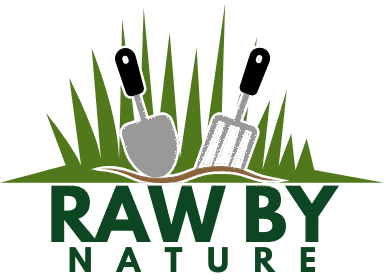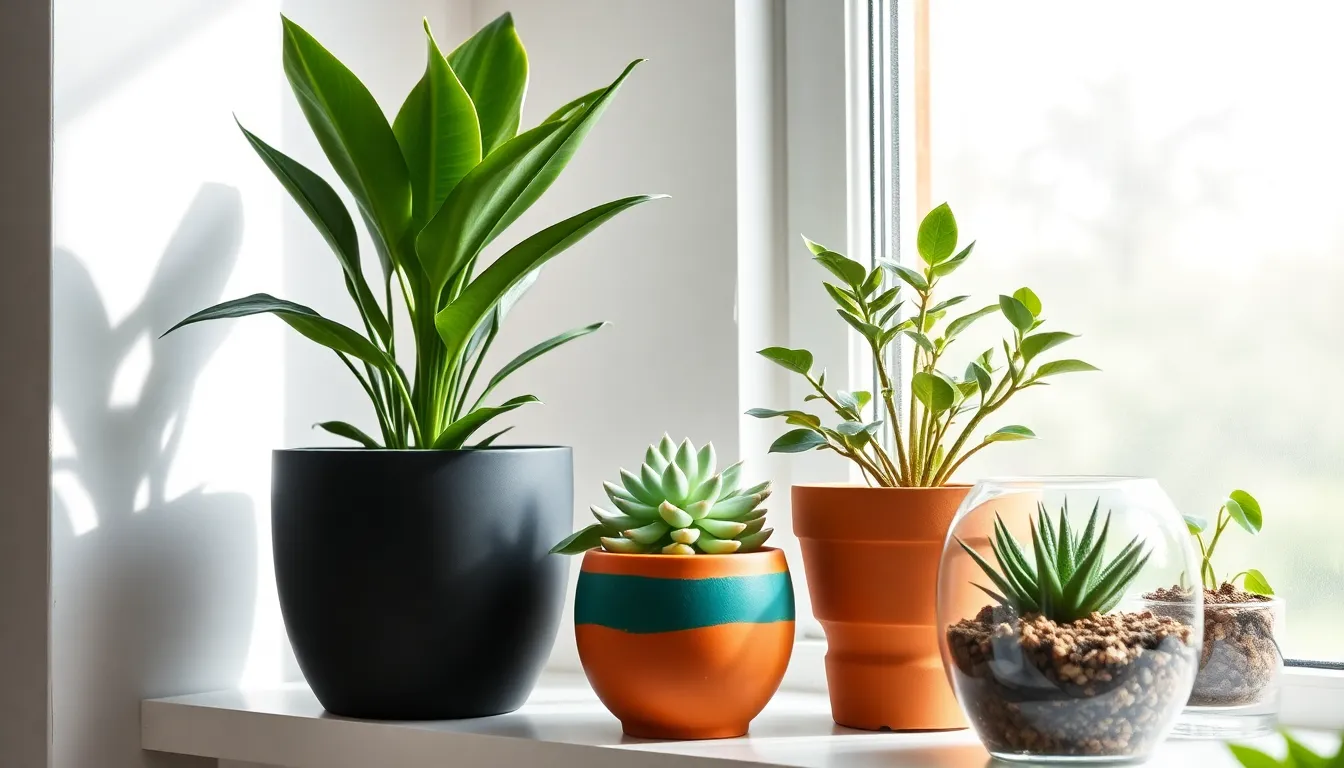Bringing the lush beauty of nature indoors can transform your living space into a serene haven, but choosing the right pots for your indoor plants is a crucial first step. Whether you’re a novice gardener just dipping your fingers into the soil or a seasoned plant enthusiast with a thriving indoor jungle, understanding the nuances of pot selection can significantly influence the health and aesthetics of your plants.
The journey of selecting the perfect pot involves more than just picking something that matches your decor. From understanding the material that best suits your plant’s needs to determining the right size to encourage healthy growth, there is much to consider. In this article, you’ll discover practical insights into the various types of pots—ceramic, plastic, terracotta, and more—and how each impacts plant care. Together, we’ll explore the balance of form and function, ensuring your plants not only survive but thrive in their new homes.
Assess Plant Size and Growth
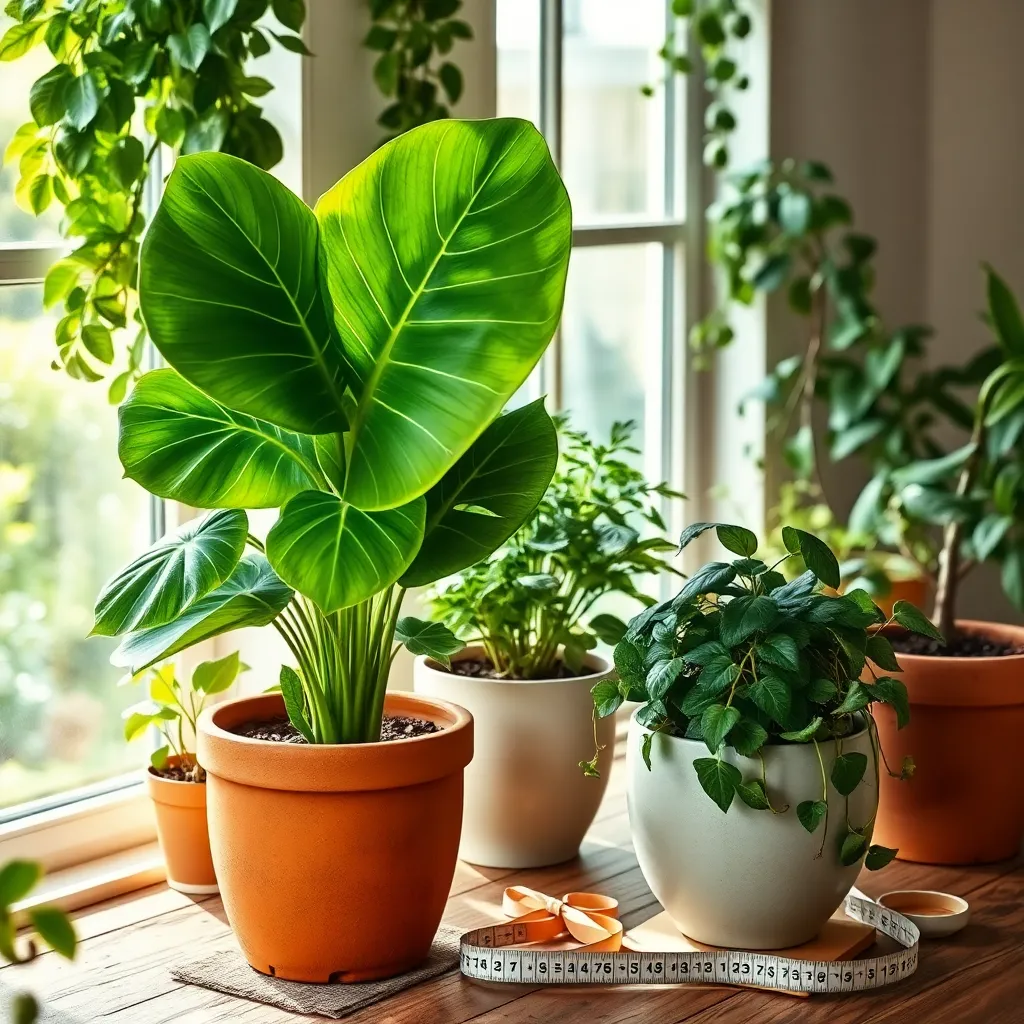
When choosing pots for your indoor plants, it’s crucial to consider the current size and eventual growth of the plant. Start by measuring the plant’s root ball and ensure the pot is about 2-4 inches larger in diameter to allow for healthy growth.
Bear in mind that different plants have varying growth rates and space needs. For instance, fast-growing plants like pothos may require repotting annually, while slow growers like succulents can stay in the same pot for several years.
Understanding the plant’s natural growth habit is also essential. Climbing plants, like philodendrons, benefit from deep pots that support their trailing vines, whereas shallow-rooted plants like herbs thrive in wider, shallower containers.
For advanced gardeners, consider the plant’s mature size to avoid frequent repotting. Investing in a slightly larger pot initially can save time and reduce stress on the plant as it grows.
Select Suitable Pot Material
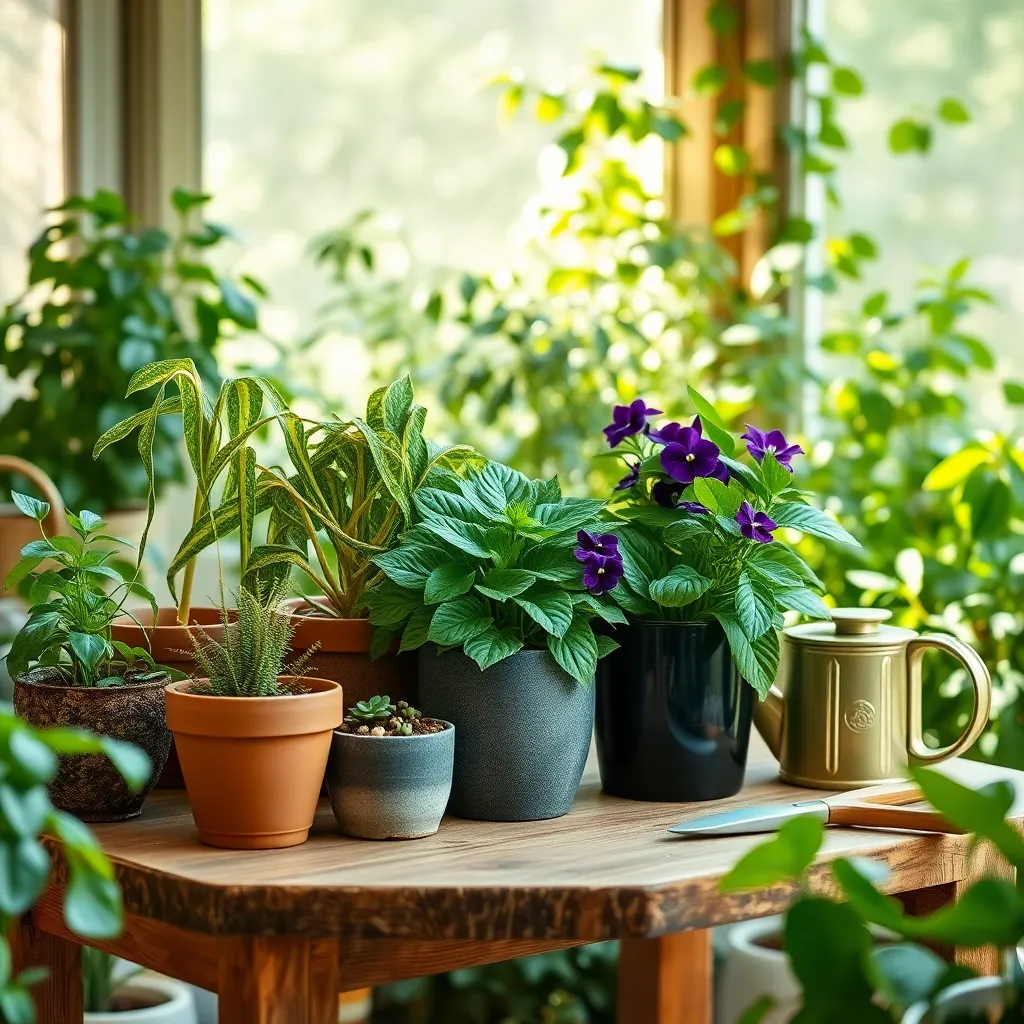
When selecting suitable pot material for your indoor plants, consider both aesthetics and function. Some materials retain moisture better, while others provide excellent drainage, influencing how often you’ll need to water.
Terracotta pots are a popular choice due to their natural look and breathability. These pots are porous, which helps prevent overwatering by allowing moisture to escape, making them ideal for succulents and other drought-tolerant plants.
Plastic pots are lightweight and often more affordable, making them a practical choice for beginners. They retain moisture longer than terracotta, which is beneficial for plants that prefer consistent humidity, such as ferns.
Ceramic pots, often glazed, provide a wide range of designs and colors to suit any decor style. However, they can be heavy and may not provide the same level of drainage as other materials, so ensure the pot has drainage holes to prevent waterlogging.
Ensure Adequate Drainage Holes
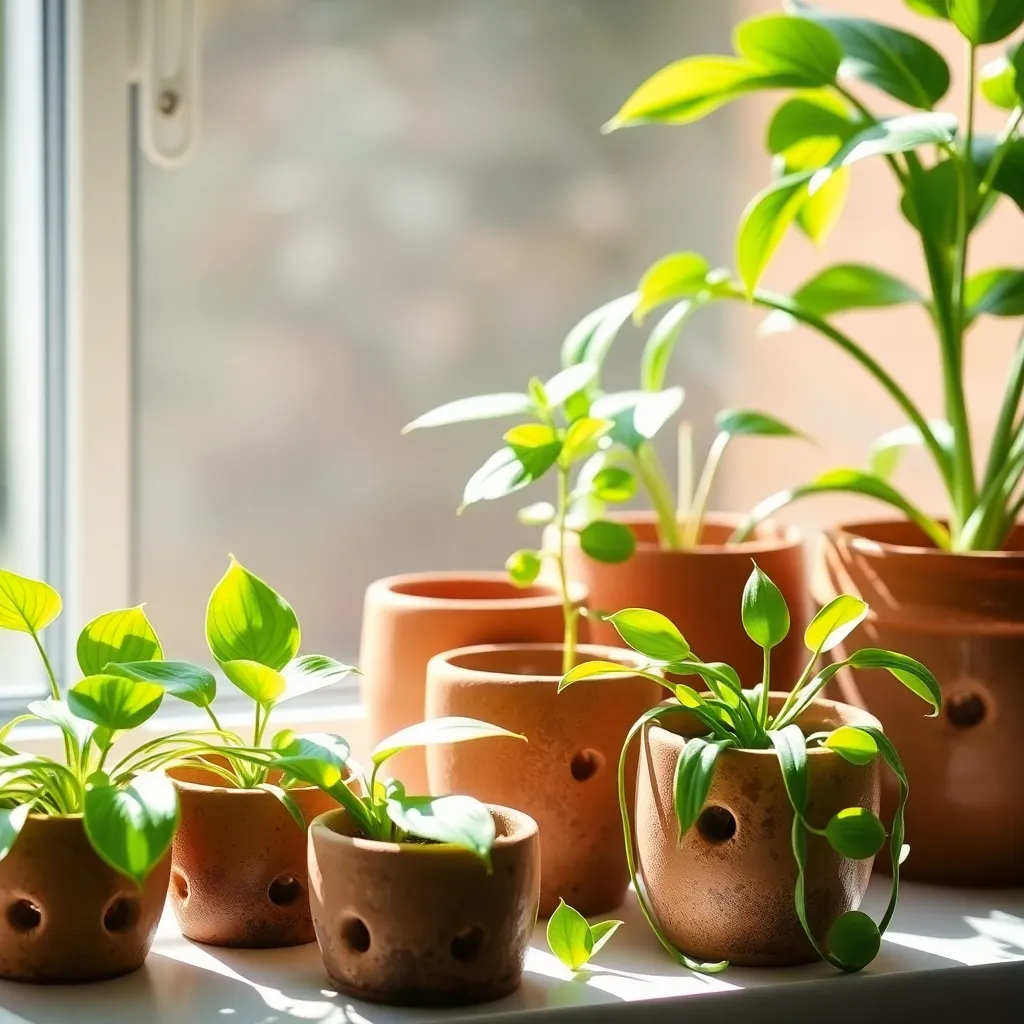
When selecting pots for indoor plants, ensuring they have adequate drainage holes is crucial for plant health. Drainage holes prevent water from accumulating at the bottom of the pot, which can lead to root rot, a common issue for many houseplants. Always check that the pot you choose has at least one hole at the bottom, and consider adding more if necessary for larger pots.
For those new to gardening, you might wonder why drainage is so important. Without proper drainage, excess water can suffocate plant roots, depriving them of the oxygen they need. This is especially critical for plants like succulents and cacti, which thrive in dry conditions and are prone to rot in overly moist environments.
Experienced gardeners know that even pots with drainage holes can sometimes become clogged. To prevent this, place a layer of coarse material such as gravel or broken pottery shards at the bottom of the pot. This layer helps facilitate water movement and further ensures that soil doesn’t block the drainage holes.
In addition to proper drainage, consider the type of soil you use in the pot. A well-draining potting mix, often containing components like perlite or sand, is ideal for most indoor plants. For plants requiring more moisture retention, such as ferns, choose a mix that includes peat moss or coconut coir. Adjusting the soil composition to match your plant’s needs will optimize drainage and promote healthy growth.
Consider Pot Aesthetic and Style
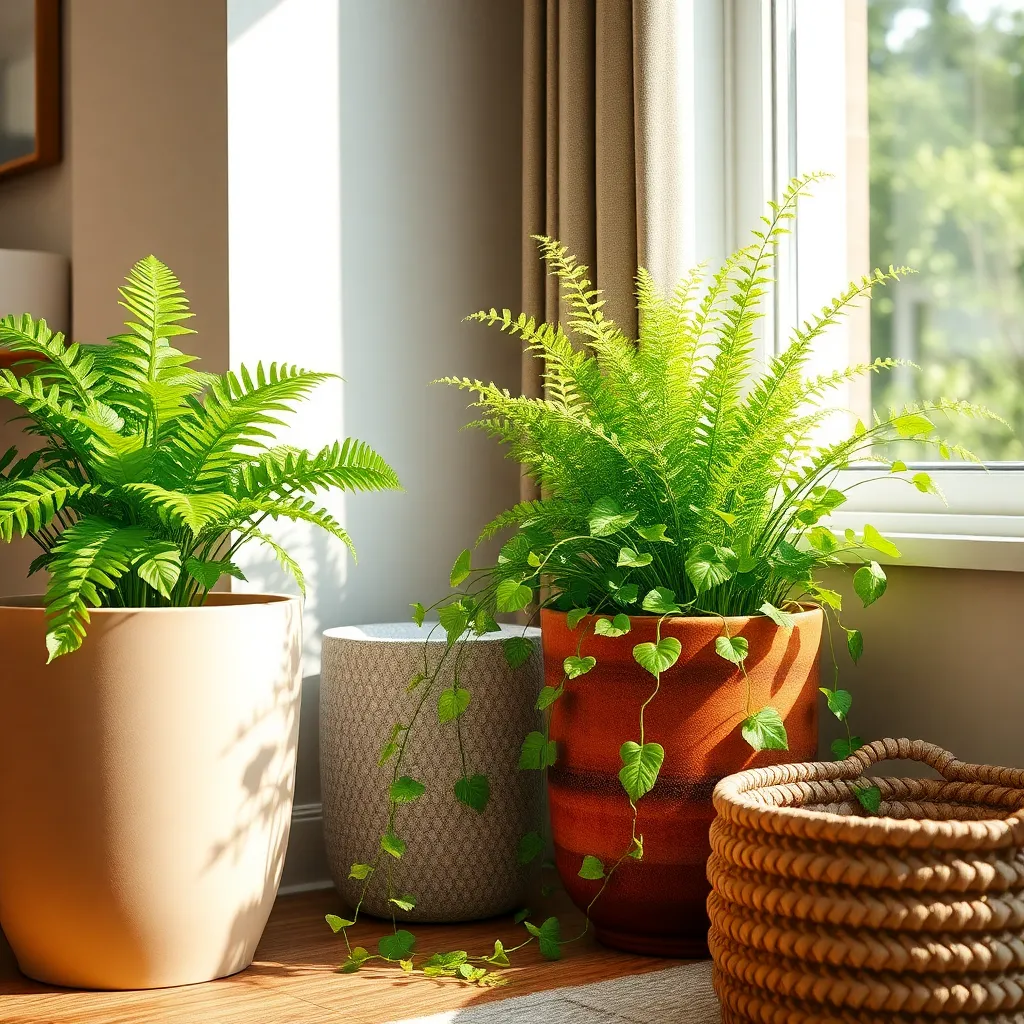
When selecting pots for your indoor plants, consider the aesthetic and style to enhance your indoor space. Choosing a pot that complements your interior design can turn your plant into a visual focal point, creating a harmonious look in your home.
Start by considering the material of the pot, as this can significantly impact both the look and function. For example, ceramic pots offer a classic and elegant appearance, while terracotta gives a rustic charm and is ideal for plants that prefer drier conditions.
Color is another essential factor in pot selection, as it can influence the ambiance of your room. Brightly colored pots can add a pop of vibrancy, while neutral tones may help create a calming atmosphere. Choosing a color that contrasts with the plant’s foliage can also make the plant stand out.
For those looking to create a cohesive design, consider grouping plants in similar style pots. This can be especially effective if you’re creating an indoor garden or plant shelf. Use a mix of sizes and shapes to add visual interest, ensuring each plant has enough space to thrive.
Match Pot to Indoor Environment
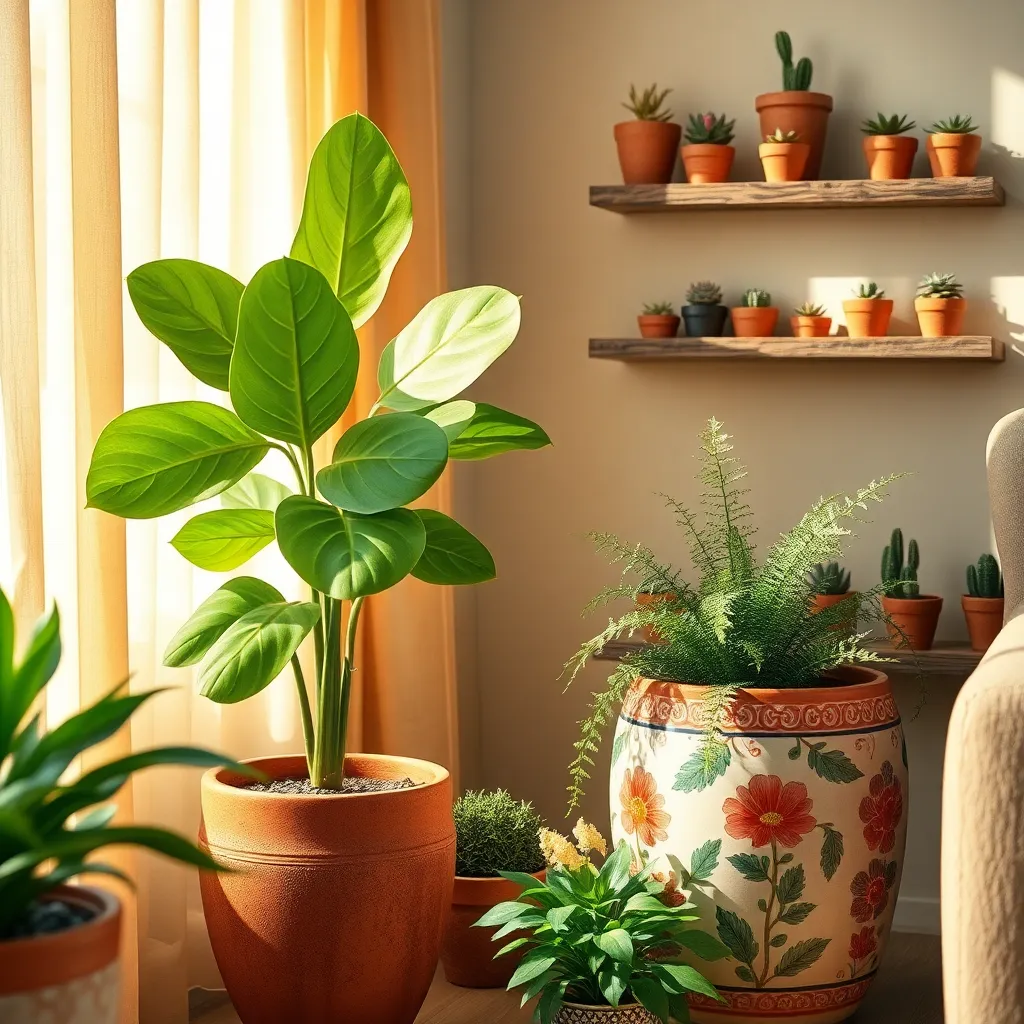
When selecting pots for indoor plants, it’s crucial to match the pot to your home’s environment. Consider the humidity and temperature levels in different rooms, as these factors will influence the health of your plants. For example, succulents thrive in low humidity, so a pot with good drainage is essential.
Understanding your indoor environment’s lighting conditions is also vital. Bright, indirect light is ideal for many indoor plants, such as peace lilies and pothos. Place these plants in rooms with ample natural light but away from direct sunlight, which can scorch the leaves.
For those with less natural light, opt for plants like snake plants or ZZ plants that tolerate low light conditions. Use pots with a matte finish to reduce glare and help these plants absorb the available light more effectively. Additionally, choose a pot size that provides ample room for root growth, ensuring healthy development.
Advanced gardeners might consider using self-watering pots, particularly in dry indoor environments. These pots help maintain consistent moisture levels, which is crucial for plants like ferns and calatheas that prefer higher humidity. Regularly check the reservoir and adjust watering frequency based on your plant’s needs and the season.
Conclusion: Growing Success with These Plants
In nurturing your indoor garden, the relationship between your plants and their pots is pivotal, much like the connections we cultivate in our lives. This article explored five key concepts: the importance of selecting pots that ensure proper drainage, understanding the significance of pot material for plant health, choosing the right size to allow growth and stability, considering aesthetics to enhance your living space, and recognizing the benefits of repotting to refresh your plant’s environment. These insights mirror the care and consideration needed in all our relationships.
As your next step, take a moment to assess your current plant setups and identify which ones may benefit from a new pot or a fresh start. This small action not only revitalizes your green companions but also reinforces the practice of nurturing relationships in your life.
Remember, just as plants need the right environment to thrive, so do our relationships. Bookmark this article to revisit these concepts and ensure your indoor garden—and, metaphorically, your relationships—flourish over time. By applying the lessons of balance, growth, and care, you set yourself on a path to relationship success, where both your plants and connections blossom harmoniously.
